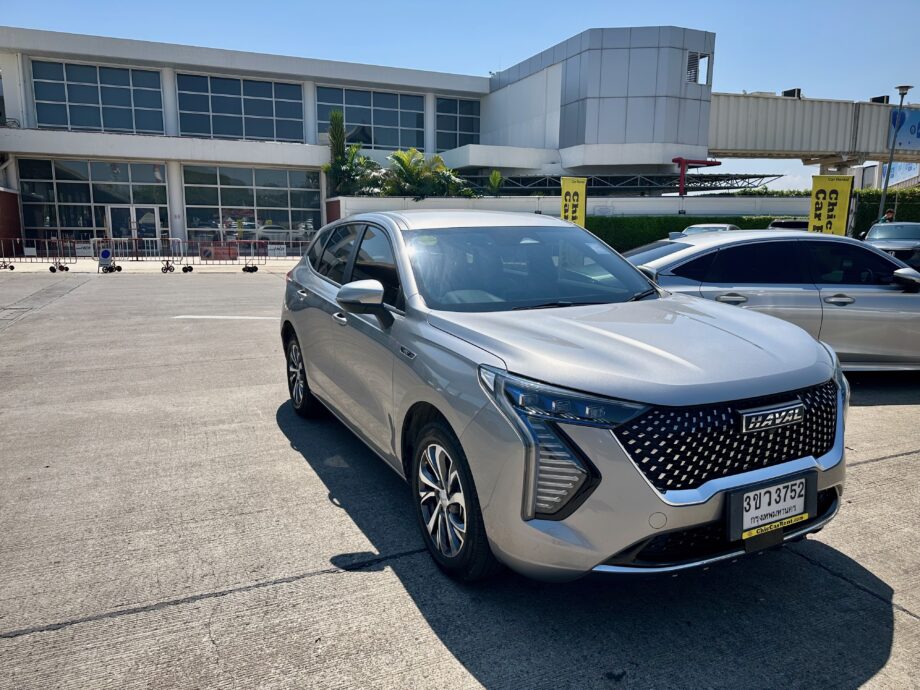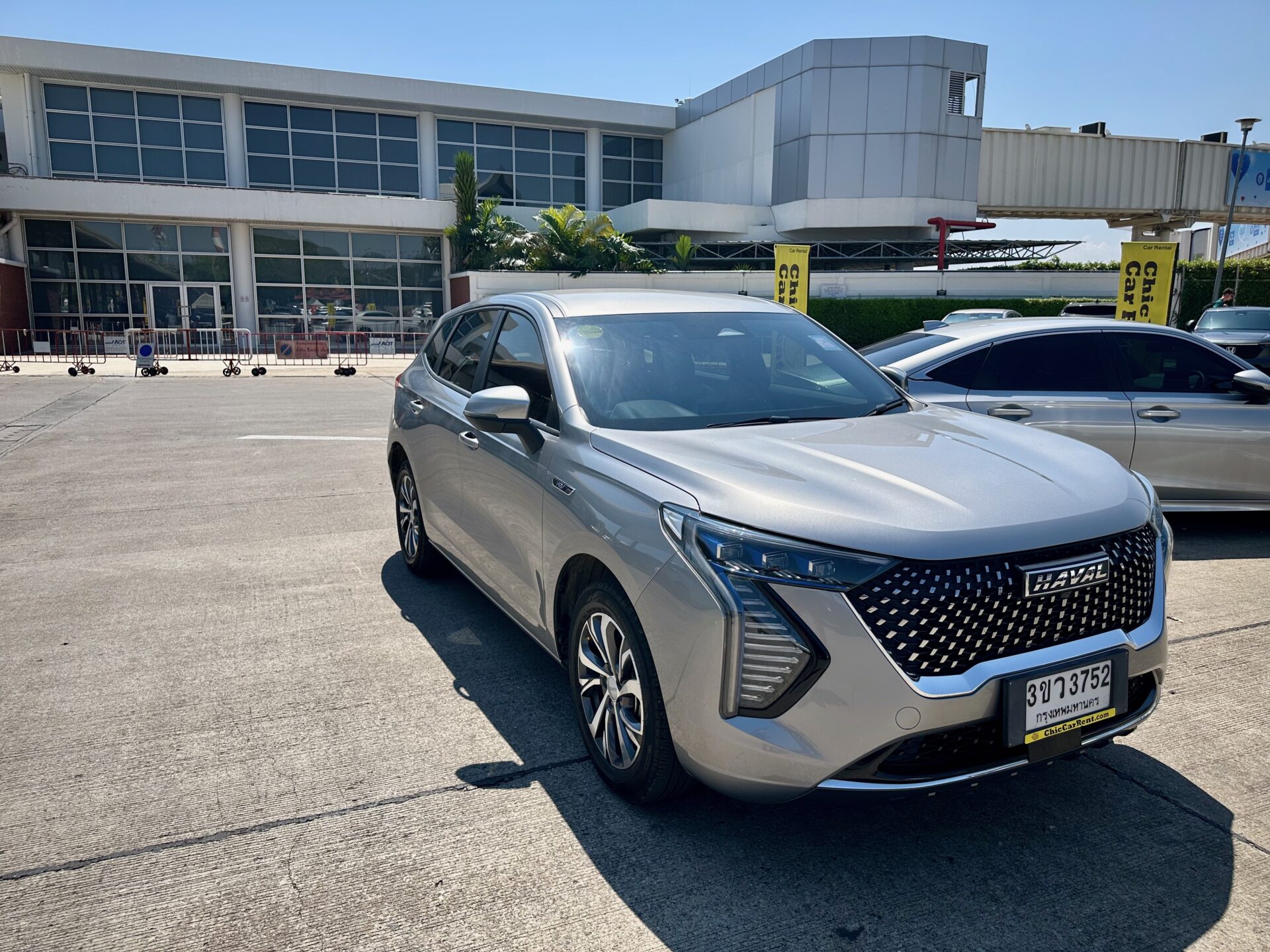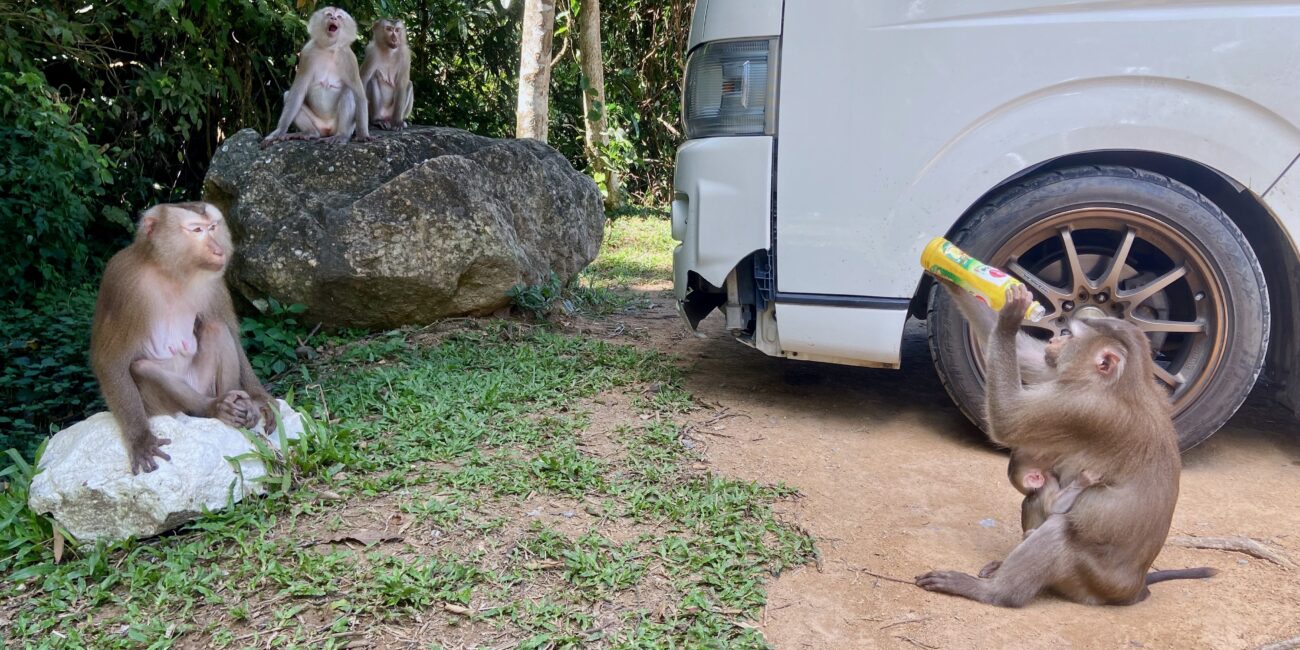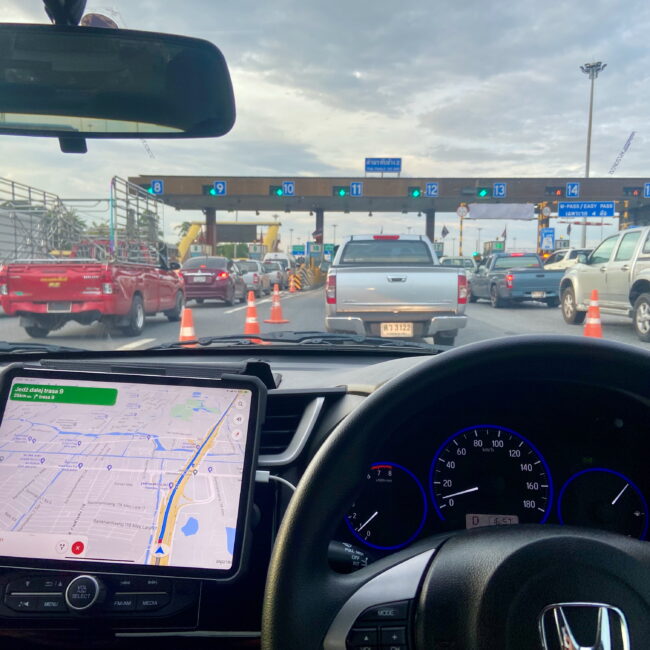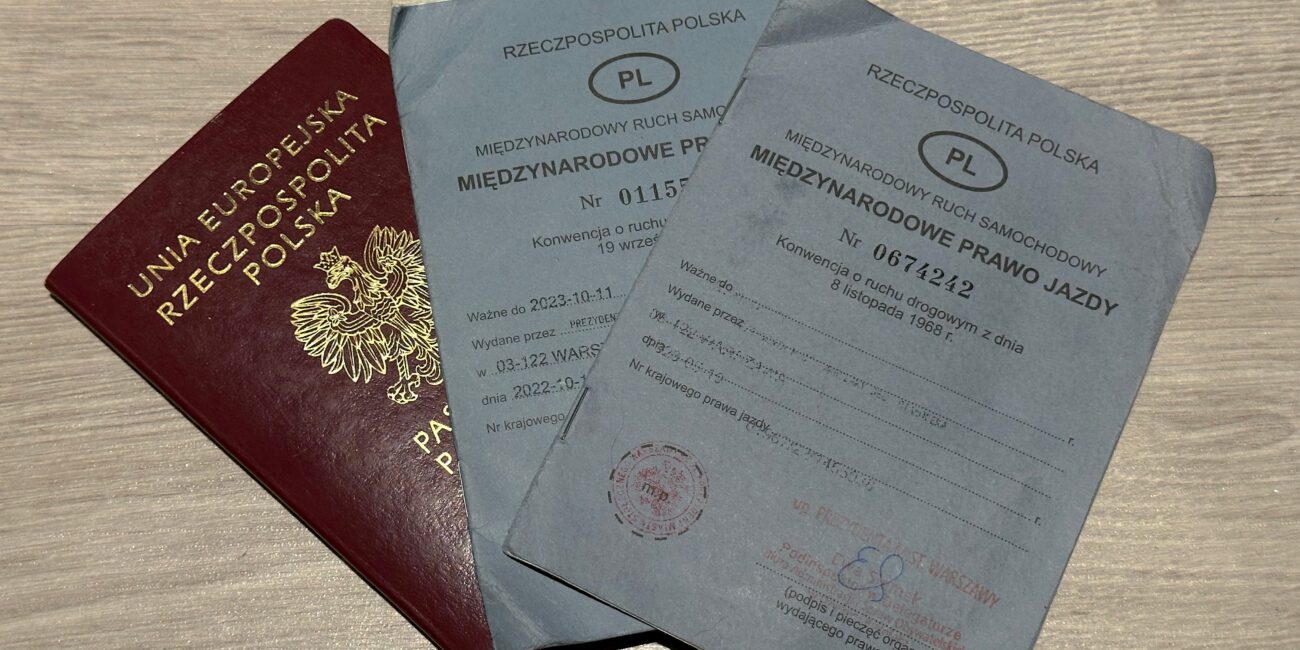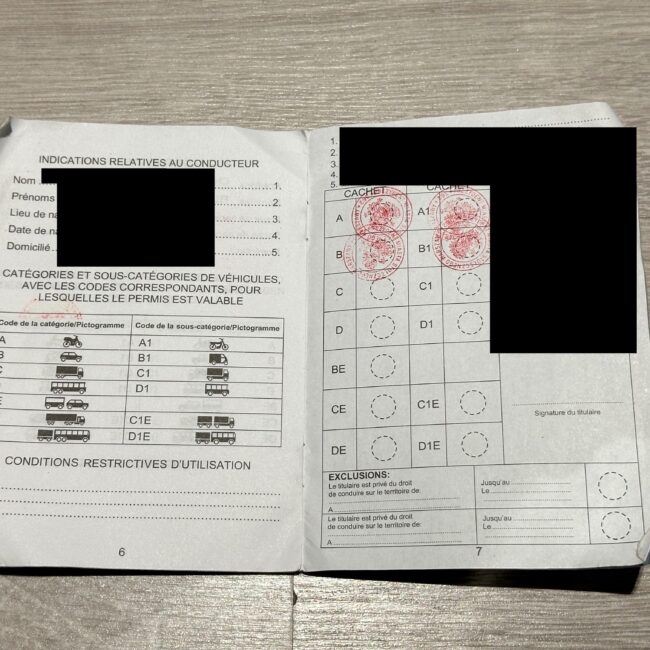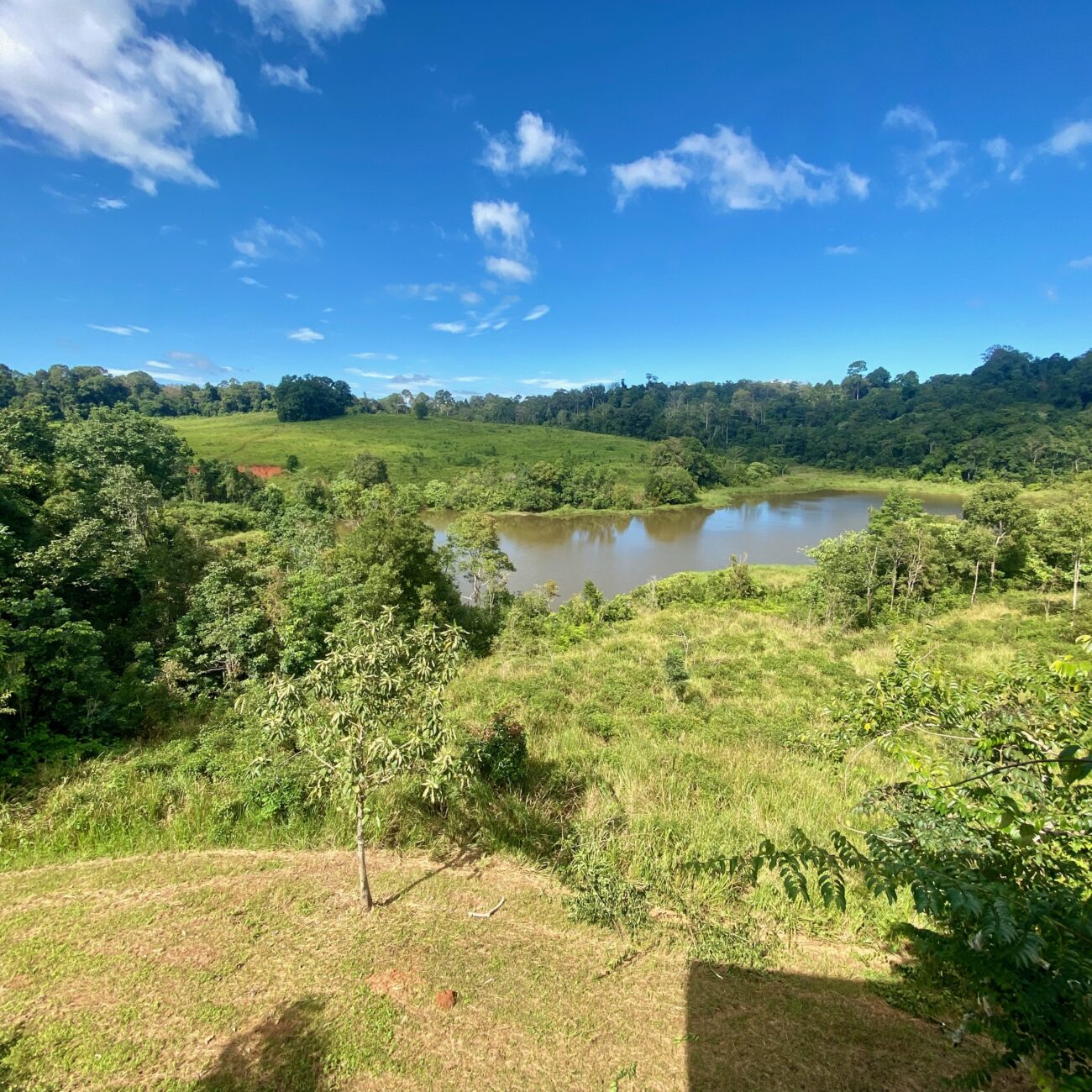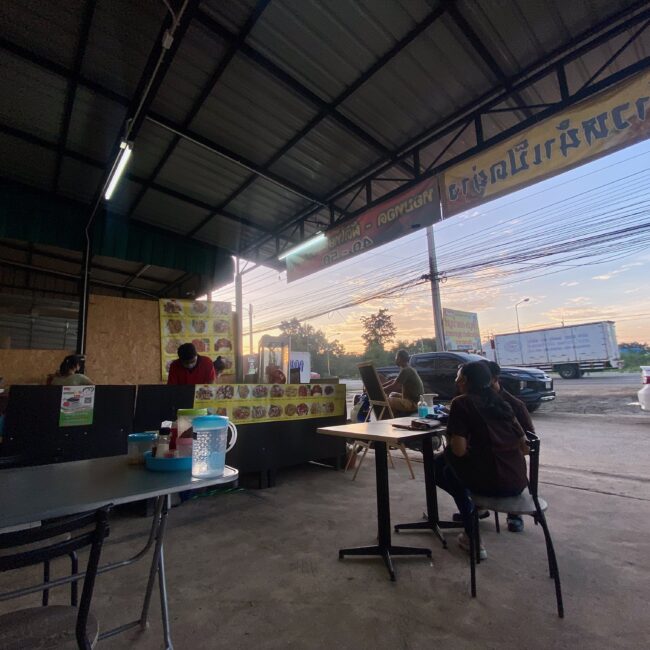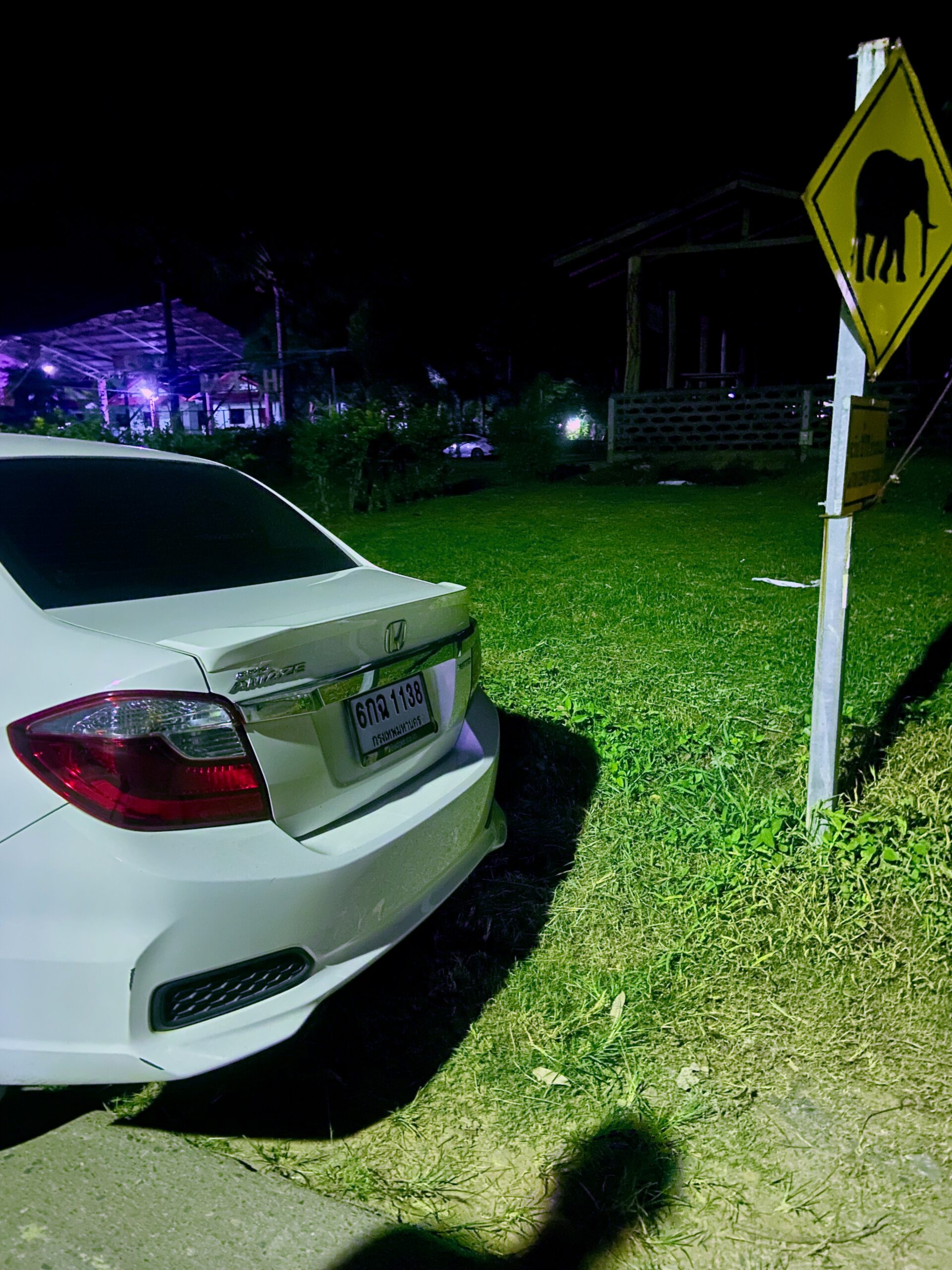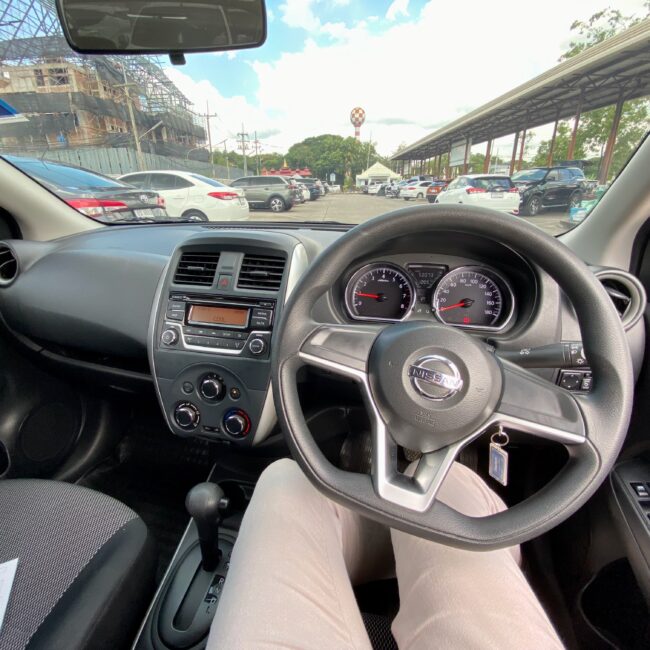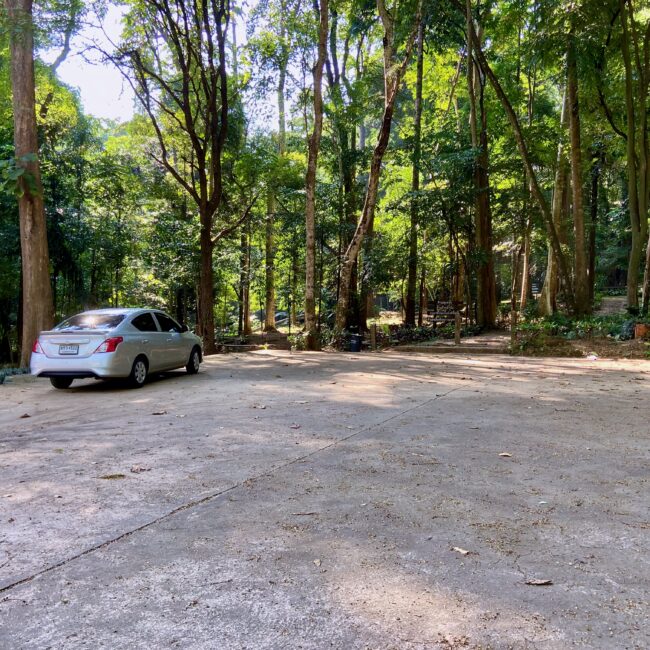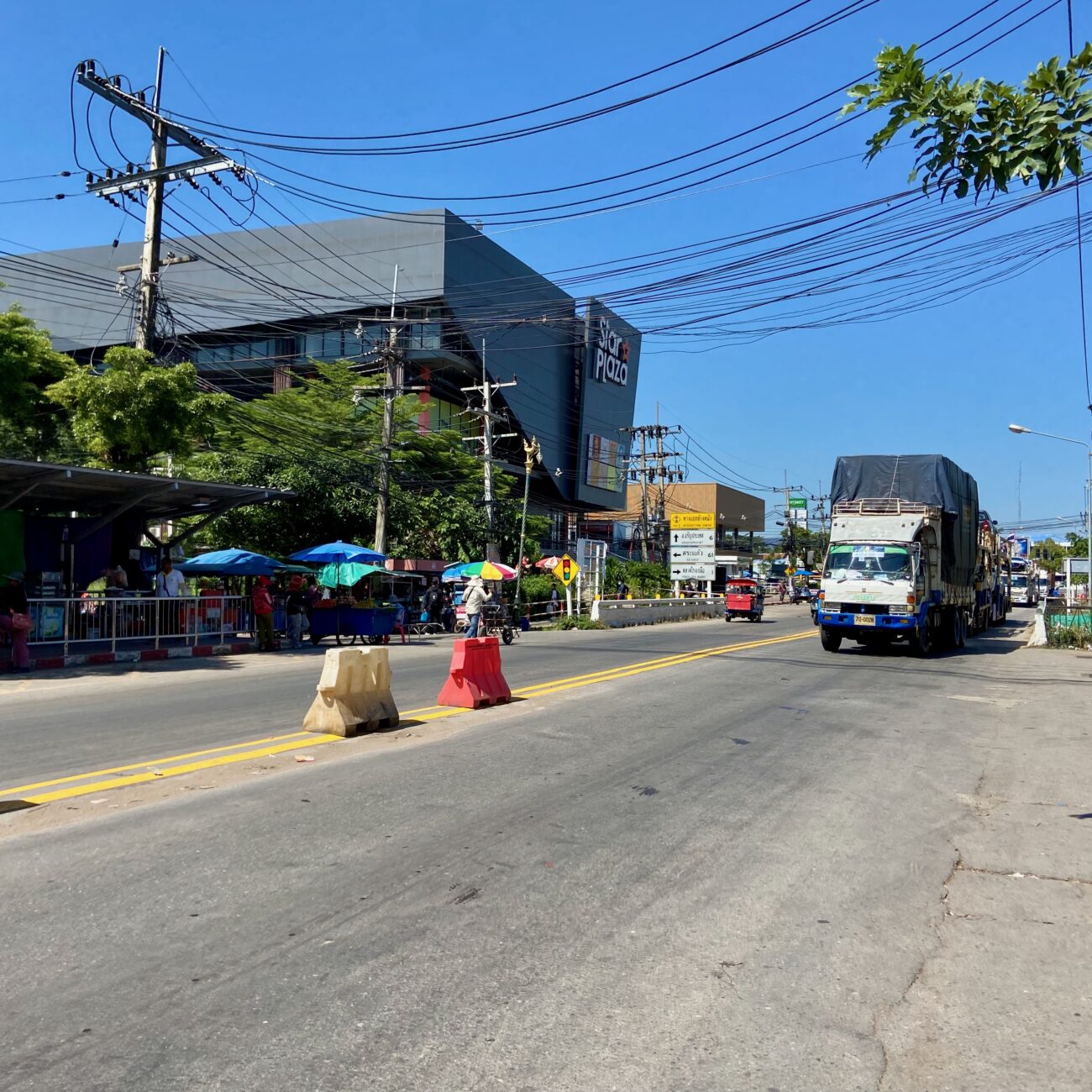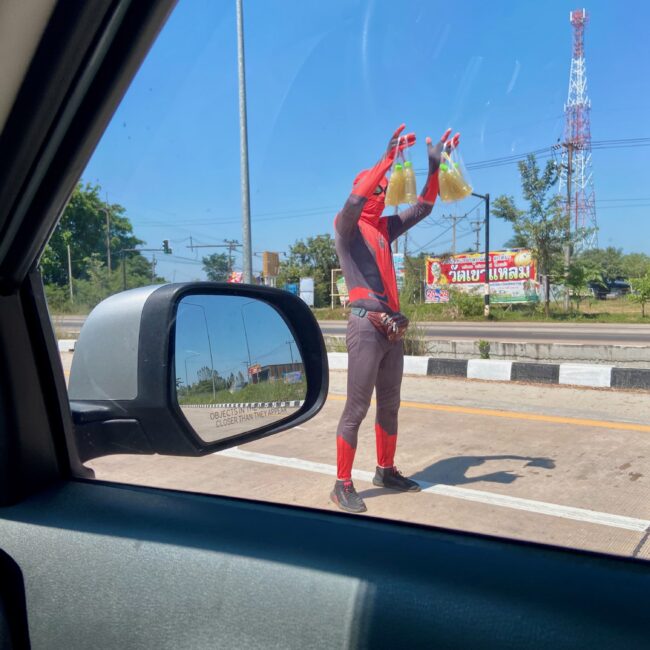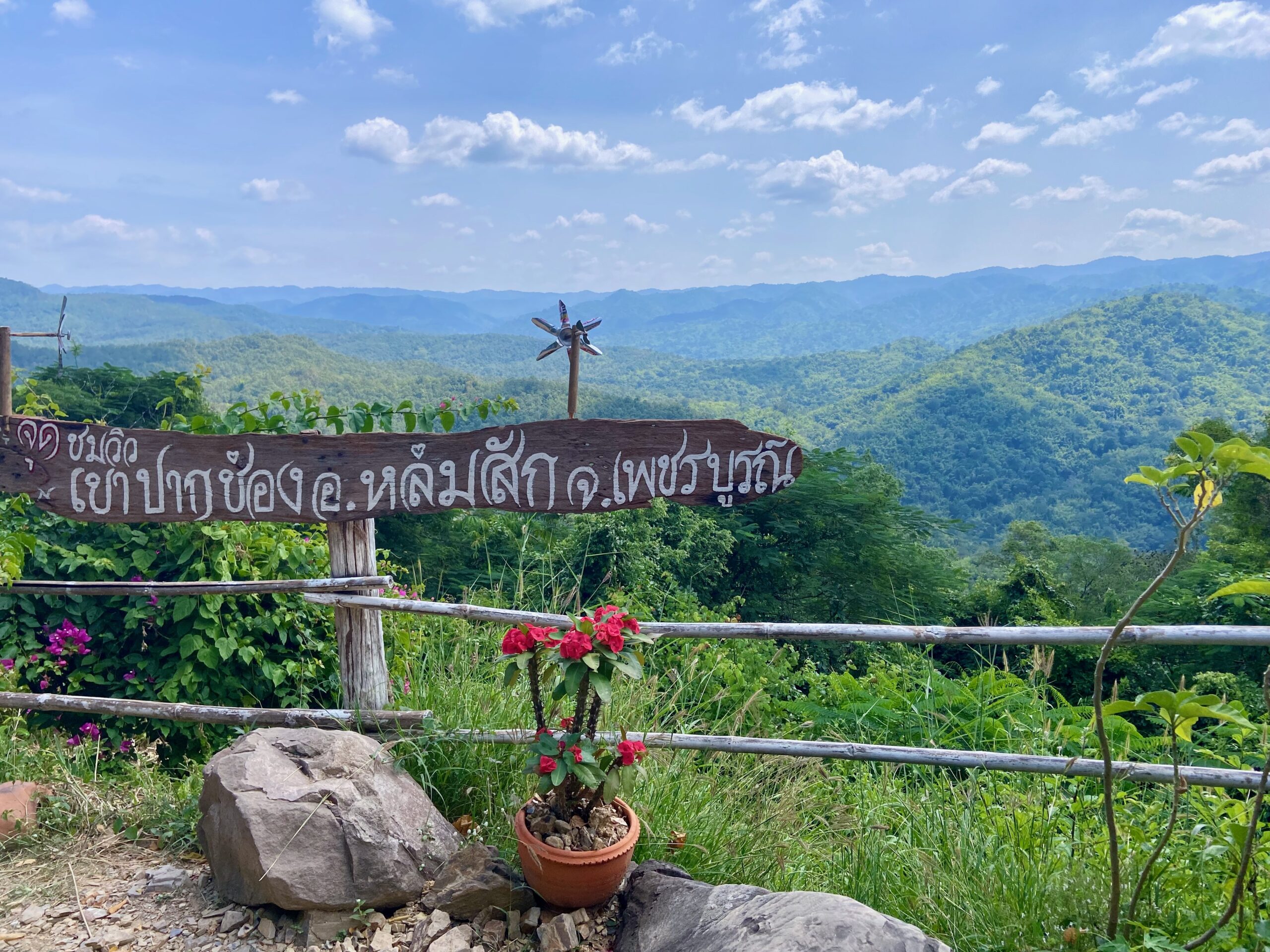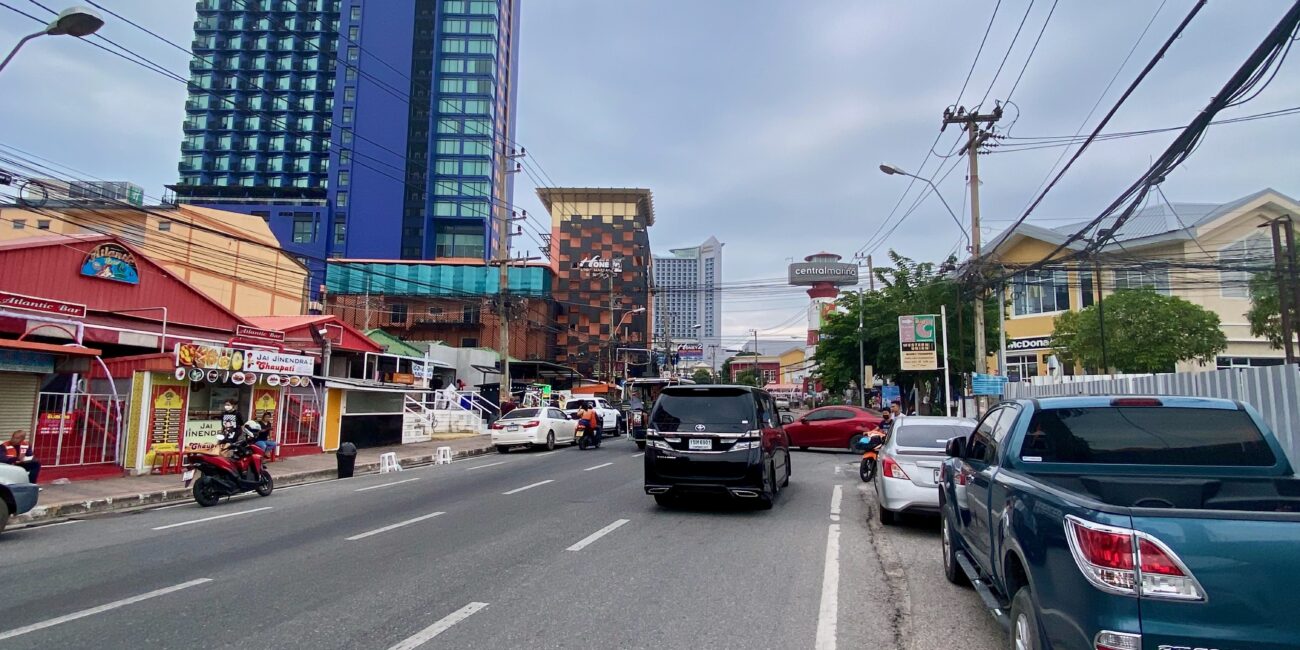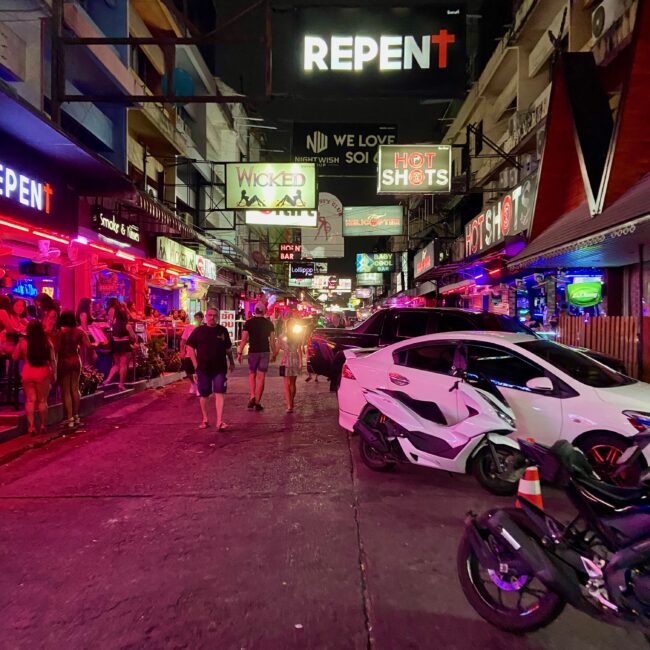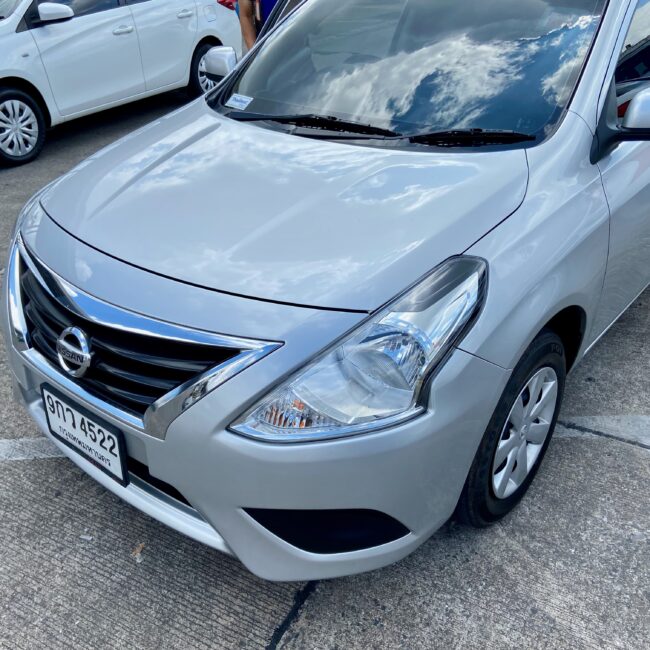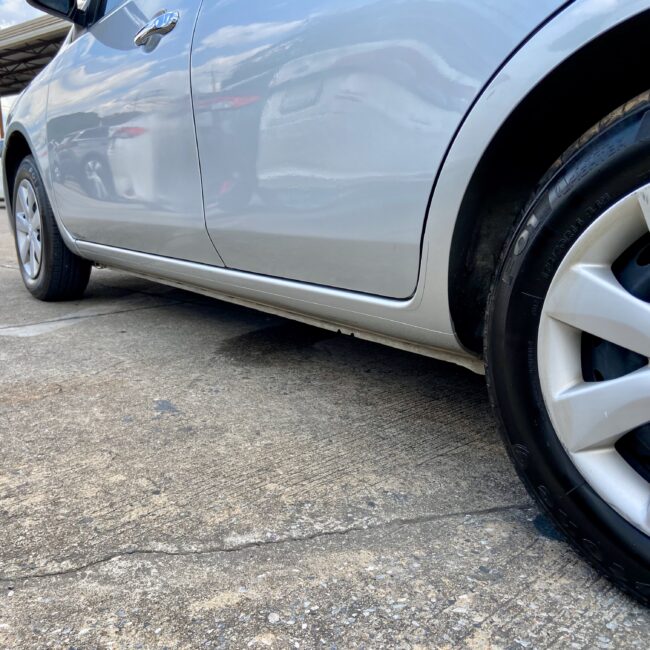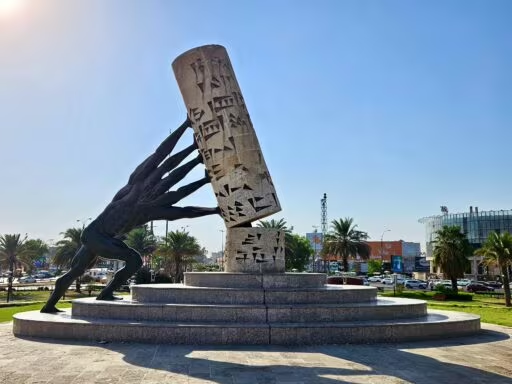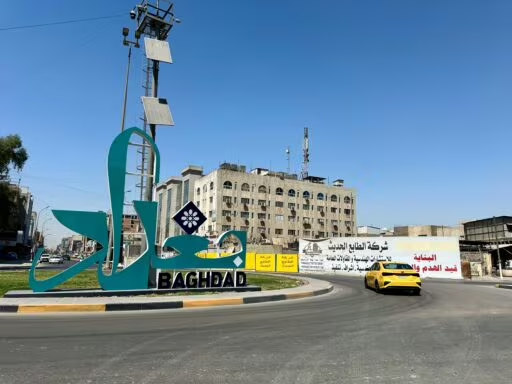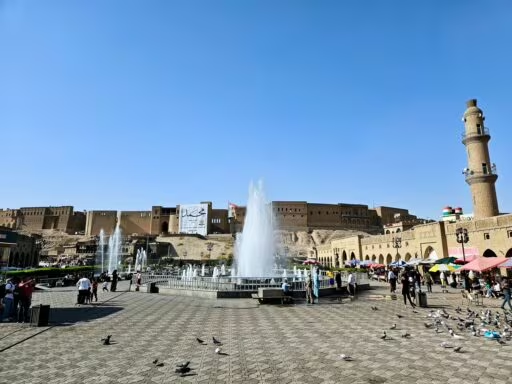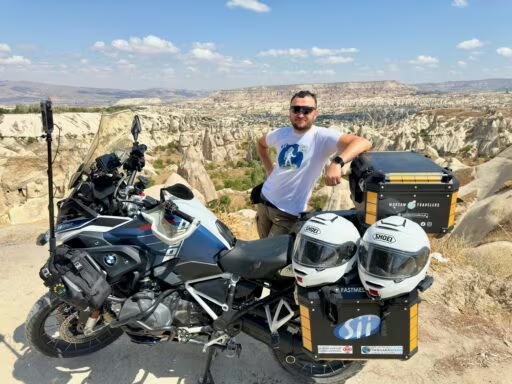This post is also available in:
Polski
Hello! 👋
Renting a car in Thailand is an adventure in itself – from signing the rental agreement to navigating the bustling roads that often seem to follow their own unique set of rules. Over the years, we’ve rented cars in various countries, but Thailand takes the experience to an entirely new level. If you’re planning to rent a vehicle in this beautiful yet occasionally chaotic country, it’s worth familiarizing yourself with some practical tips that can save not only your wallet but also your sanity.
Instead, it’s a collection of our personal experiences, mishaps, and tips that might come in handy if, like us, you prefer exploring on your own terms rather than being crammed into a tour bus with a group of strangers. Whether it’s navigating unfamiliar roads or tackling unexpected challenges, we’re here to share the reality of driving in Thailand to help you make the most of your journey.
Requirements for traveling in the country
Before you hit the road, it’s essential to know the formalities required to make your car rental experience smooth and hassle-free. From paperwork to practical tips, a little preparation goes a long way in ensuring a stress-free adventure on Thailand’s unique roads.
- Age and Driving Experience Most rental companies require drivers to be at least 21 years old and to have held a valid driver’s license for at least one year. Some companies may have stricter age requirements for specific vehicle categories or impose additional fees for younger drivers. Always check the terms of your chosen rental provider to avoid surprises.
- Driver’s License: To legally drive a car in Thailand, you must have an International Driving Permit (IDP) compliant with the Geneva Convention. A standard Polish driver’s license, for instance, is not sufficient. Failure to present an IDP can result in fines of up to 50,000 baht, so make sure you’re properly prepared before hitting the road.
- A credit card issued in the name of the primary driver is essential for securing the deposit. Ensure that the card has a sufficient credit limit to cover the required deposit, as this is a standard requirement for most rental companies.
International Driving License
For Polish citizens, obtaining an IDP (International Driving Permit) is relatively simple – you just need to submit an application at the appropriate communication department based on your place of residence, such as the city hall or county office.
You can find application forms on the official websites of the respective offices, and the process usually requires an in-person visit. If you feel a bit lost, we invite you to check out our dedicated post about the IDP. There, you’ll find a detailed guide based on our personal experiences and official information.
👉 Important: Only get your IDP made at official places to make sure the document meets international requirements – whether you’re a citizen of Poland or another country. 😊
👉 Check the local laws in your country and make sure you have both a valid national driver’s license and IDP to legally rent a car and drive. For more information: internationaldrivingpermit.org.
Where to rent a car in Thailand?
Planning a trip to Thailand, renting a car can be a fantastic way to explore this captivating country on your own terms. Airports are among the most convenient places to pick up a car, offering a variety of options from international and local rental companies.
Renting a car directly at the airport comes with many advantages. First and foremost, you can pick up the vehicle immediately upon arrival and begin your journey without needing additional transport to the city. Additionally, many airport rental companies offer the option to return the car at a different location, which is convenient if you’re planning a one-way trip. However, keep in mind that some companies may charge extra fees for returns in different locations, so it’s always a good idea to review the rental terms beforehand.
Both international chains, such as SIXT, and local rental companies operate at airports. International companies often provide a higher standard of service and newer vehicles, although their prices may be slightly higher. On the other hand, local rental companies tend to offer more competitive rates, but it’s important to carefully check the vehicle’s condition and insurance terms before making a decision.
What costs are involved?
The cost of renting a car in Thailand is a topic that’s hard to generalize – it largely depends on the region where you plan to rent. Thailand is a vast and diverse country, which means rental options and prices can vary significantly depending on the location.
Prices vary by region
In Bangkok, the country’s business and tourist hub, you’ll find a wide range of rental options, including both international and local companies. Prices here can be slightly higher due to high demand. Meanwhile, in southern regions like Phuket or Krabi, costs depend heavily on the season—rates tend to be higher during peak tourist periods but more affordable off-season. In the north, in places like Chiang Mai or Chiang Rai, prices are often lower, although the selection of vehicles might be more limited.
Why use price comparison sites?
If you’re looking for the best deal, it’s always worth checking car rental comparison websites. We often use Economy Car Rentals, where we usually find vehicles at reasonable prices. These platforms are particularly useful for quickly comparing available cars in your chosen location and determining whether it’s worth booking in advance.
Example costs
- In Bangkok, prices for small car rentals start at around PLN 80-100 per day.
- In the south, in Phuket, prices can range from PLN 100-120 in high season, but in less popular months you can rent a car for as little as PLN 70-80 per day.
- In the north, in Chiang Mai, rentals often cost from PLN 60 per day, but the choice of luxury cars or SUVs can be limited.
Additional charges
- Insurance: Basic insurance is usually included in the rental price, but it’s worth considering additional policies, such as waiving the deductible (CDW), to minimize costs in the event of potential damage. It’s worth it, but you don’t have to – this is explained later in the text.
- Additional Driver: If you plan for more than one person to drive the car, the rental company might charge an extra fee for each additional driver.
- Young Driver: Drivers under the age of 25 may incur an additional fee.
- Fuel Policy: Many car rental companies require the vehicle to be returned with a full tank. Failing to do so may result in a surcharge for the missing fuel.
- Accessories: Renting GPS, child seats, or other equipment involves additional costs.
Fuel
When traveling through Thailand in a rental car, it’s important to consider fuel availability and prices. Thailand offers various types of fuel, including unleaded gasoline (95 octane), diesel, and LPG (autogas). As of early January 2025, average fuel prices were as follows:
- Unleaded 95 gasoline: about THB 45.67 per liter.
- Diesel: about THB 32.94 per liter.
- LPG (autogas): about THB 14.71 per liter.
Private gas stations and the sale of bottled fuel
In smaller towns and rural areas, you’ll often come across small, privately operated fuel points. Refueling at these places can be an unusual experience, almost like stepping back in time. Fuel is frequently sold in unconventional ways, such as in glass or plastic bottles, often repurposed from alcoholic beverages. These roadside shops serve as a practical solution where traditional fuel stations are scarce, catering to both local residents and travelers in need.
Another interesting option found in Thailand is self-service fuel vending machines that operate with coins or banknotes. These machines, often located along streets, offer a quick and convenient way to refuel, especially for scooter users. This practical solution can be a lifesaver when a traditional fuel station is out of reach.
Road tolls in Thailand
One of the key toll roads in Thailand is Highway 7, which connects Bangkok to Pattaya. The 126-kilometer journey on this road incurs a toll fee of 105 baht, which translates to less than 1 baht per kilometer.
Another important route is Highway 9, known as the Outer Ring Road of Bangkok, which is also part of the toll system. It’s worth noting that during specific periods, such as New Year’s holidays, authorities may implement temporary toll waivers on selected sections to ease travel and reduce traffic congestion.
Tolls are collected at booths located at strategic points along the routes. Drivers can pay the fees in cash or use electronic payment systems like M-Pass or Easy Pass, which allow for faster passage without needing to stop. However, credit or debit card payments are not accepted, so it’s essential to carry cash or use one of these electronic options.
Outside of the main highways and expressways around Bangkok and routes leading to popular tourist destinations, most roads in Thailand are toll-free.
Insurance
Basic insurance (CDW – Collision Damage Waiver) is usually included in the cost of renting a car in Thailand. It covers repair costs in the event of a collision but often comes with an excess, which is the amount the driver must pay out of pocket.
It is possible to enhance your coverage by purchasing additional insurance either during the online booking process or directly at the rental office. However, it’s important to be cautious—rental companies often try to upsell extra policies that may not always be necessary.
If you already have travel insurance, a credit card with insurance benefits, or a travel policy that includes rental car coverage, additional insurance might not be necessary. It’s a good idea to carefully review the details of your coverage before your trip to avoid unnecessary expenses.
Travel insurance
When planning a trip, especially outside the European Union, it’s crucial to carefully consider the right travel insurance. Before making a decision, be sure to check the recommendations of your country’s Ministry of Foreign Affairs regarding the regions you intend to visit. Why is this important? In cases where travel to a specific area is advised against, your insurance policy may not cover incidents that occur there.
Be sure to carefully review the Terms and Conditions of Insurance (T&Cs). This document contains detailed information about the scope of coverage, including the risks and regions covered by the policy.
Travel insurance is not just about health coverage. It also includes assistance with car rentals, legal support, and other unforeseen situations that might arise during your trip. Proper preparation ensures you can enjoy your journey without unnecessary stress.
Road rules and regulations in Thailand
Thailand has left-hand traffic, which means that drivers drive on the left side of the road and the steering wheel in vehicles is on the right side. For those accustomed to right-hand traffic, this may take some getting used to.
Speed limits in Thailand depend on the type of road:
- Built-up areas: 60 km/h
- Outside built-up areas: 90 km/h
- Highways and expressways: 110 km/h
In cities such as Bangkok, the standard speed limit is 50km/h, and can be lowered to 30km/h near schools and in areas with heavy pedestrian traffic.
All passengers in vehicles equipped with seat belts are required to wear them. Drivers and passengers on motorcycles or scooters must wear protective helmets. Violating these rules can result in a fine of up to 2,000 THB.
The legal blood alcohol limit in Thailand is 0.05%. For professional drivers and individuals with less than five years of driving experience, the limit is reduced to 0.02%. Penalties for exceeding these limits are severe and may include hefty fines, license suspension, or even imprisonment.
Using mobile phones while driving is only allowed with hands-free devices. Using a phone without such a device is prohibited and may result in a fine.
Reality on the road
If you think driving in Thailand will resemble the calm, orderly experience of Europe – well, get ready for an adventure. Here, the road is a living organism, and the rules? They’re more like suggestions than strict guidelines everyone follows.
At first glance, the traffic may seem chaotic. Motorcycles weaving between cars, sudden lane changes without signaling, and drivers overtaking with mere inches to spare are all part of the daily scene. It’s all part of the unique “Thai driving style”, which you need to understand and adapt to in order to reach your destination safely.
In cities like Bangkok or Chiang Mai, the biggest challenge is dealing with motorcycles and scooters. They’re literally everywhere, appearing out of nowhere—on your right, left, or even coming straight at you, sometimes going against traffic. Staying alert is crucial because here, the rule of “the bigger vehicle has the right of way” often takes a back seat.
Traffic lights? Yes, they exist, but their interpretation can vary. For some, a red light is more of a suggestion than a strict command to stop. If someone flashes their high beams at you, don’t assume they’re letting you go. It usually means “I’m coming through and won’t be stopping”.
On expressways and highways, the traffic is generally more organized, but you should still keep an eye out for trucks and buses. They often move very slowly in the left lane or switch lanes suddenly without checking their mirrors. If you’re planning a trip through the mountainous roads of the north, be prepared for sharp curves, steep climbs, and local drivers who know these routes well—but don’t always stick to speed limits.
Corruption
Thailand has strict traffic laws, particularly considering the local income levels. For instance, riding without a helmet can result in a fine of up to 2,000 baht. However, in practice, tourists often encounter situations where officers suggest settling the “fine” on the spot without issuing an official ticket. These amounts are often lower than the official rates, which can tempt some to take advantage of such “offers”.
Tourists often share accounts of being stopped by traffic police, particularly while riding scooters, and fined for not wearing a helmet or lacking the appropriate driver’s license category. In some cases, travelers have reported officers directly reaching into their wallets to take the required amount.
According to the law, fines should be paid at designated locations, such as police stations or government offices. However, the practice of “settling” the matter on the spot is common. It’s important to be aware that such actions are illegal and contribute to perpetuating corruption in the country.
How to avoid extra fees and hidden costs?
To avoid unpleasant surprises when renting a car, it is worth paying attention to several key aspects:
- Online booking: make your reservation in advance online. This allows you to compare prices and get a thorough understanding of the rental terms, avoiding higher fees on the spot.
- Fuel policy: Always choose the “full to full” option. Returning with an incomplete tank incurs additional refueling fees, often much higher than the standard price at the station.
- Insurance deductibles: check the amount of the deductible that applies to basic insurance and whether additional insurance is really necessary. Beware of pressure from the rental company to purchase extended insurance if you have alternative coverage from other sources (such as a credit card).
- Return Conditions: Make sure you understand the rules for returning the vehicle, including the times and place of return. Minor delays may incur charges for an additional day of rental.
- Liability for damages: Make sure what damages are covered by insurance and what costs you may incur in the event of an accident. Some rental companies may try to shift liability to you for minor damages that are not your fault.
- Cancellation and change of reservation: Check the terms and conditions for cancellations and changes to reservations. In some cases, changes made close to the rental date may incur additional charges.
- Chargeback: If you encounter wrongful charges, it is worth remembering to use the chargeback procedure on your payment card. You can report the unauthorized transaction to the bank, which will process the chargeback.
Document the receipt and return of the car
To avoid unforeseen charges:
- Inspect the vehicle: Before taking delivery, inspect the car carefully, writing down any existing damage in a report.
- Take pictures: Document the exterior and interior condition of the car upon receipt and return, including fuel levels. Check for cigarette burns on the upholstery.
- Confirmation of return: Ask the rental company employee to confirm in writing that the car has been returned without new damage.
- Keep documents: Keep contracts, confirmations and photos as evidence if disputes arise.
Refueling the car
At most gas stations, service is provided by station employees. They fill the tank for you, so you don’t even have to leave your car.
- You drive up to the right pump,
- The employee asks you what fuel to choose,
- You indicate whether you want to refuel for a certain amount, up to full (“full tank”), or for a certain number of liters,
- When you have finished refueling, you pay directly to the employee – in cash or by card, depending on the availability of a payment terminal.

